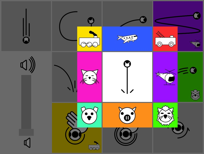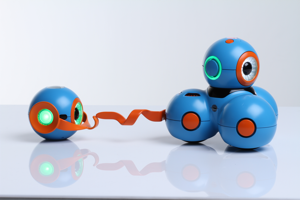By summer 2014, robots could be teaching kids as young as five years old how to code.
Play-i, a company founded in 2012 by veterans from Amazon, Apple, Frog Design and Google, has created robots, Bo and Yana, designed for children to learn how to program.
“Our children are growing up with iPads and iPhones in their hands,” said Vikas Gupta, cofounder and CEO of Play-i. “You have to ask yourself, ‘Is my child going to be a consumer, or can they use these tools to create more powerful things?’ The robots make them curious about the technological world they are growing up in.”
(Other robots that can be programmed, but aren’t for learning)
Unlike other programming languages where children are first taught the syntax, Play-i focuses on learning through exploration, play and discovery.
“As a father, I know that a child’s world is about play,” said Gupta. “Play-i robots make abstract concepts of programming concrete, unlocking a whole new world of imagination, creativity and play for children.”
The robots connect wirelessly with Android and Apple mobile devices through Bluetooth LE. Stories and music are used as context to present programming in a visual interface so children don’t realize they are learning programming, according to Gupta. When a child grows out of the visual interface, they can look behind the interface to see the real code and start writing themselves.

Play-i’s visual interface
To start, Play-i’s interface focuses on concepts, not a particular language. Children will also be able to use Scratch and Blockly, visual drag-and-drop programming interfaces developed by MIT and Google, to program the robots. Play-i’s API will let anyone program the robots using a programming language of their choice.
“We plan to support Scratch and Blockly by providing libraries in those languages, and providing as much support as needed for these within our applications,” said Gupta.
By 2020, there will be 1.4 million more computer science jobs than there will be people to fill those jobs, according to Code.org. Play-i aims to address that by getting kids interested in coding at a young age.
“We don’t want to create an army of computer programmers,” said Gupta. “Not every person who learns how to program has to become a programmer.”
#!
“Programming skills can help young learners succeed throughout life, from strengthening their vocabulary to improving problem-solving abilities,” said Steve Cooper, associate professor of computer science education at Stanford University and adviser for Play-i.
Currently, Play-i is undergoing a crowdfunding campaign. The company has set a goal of US$250,000 in 30 days; launched on Oct. 28, it has already crossed the 50% mark as of this writing.
Play-i is continuously evolving and defining its API. As a result, developers can reserve a developer’s pack from Play-i in order to work on the API. Developers will get Bo and Yana months before they are released, and will have control over all the robots’ capabilities in the language and platform of their choice. Only 100 developer’s packs are available for purchase.
“We have limited it to 100 at the moment because we want to be able to support and engage with our community well before opening it up to others,” according to Play-i’s blog.
During the campaign, robots will be available at $149 for Bo and $49 for Yana. After the campaign, Bo is expected to cost $199 and Yana $69.

Yana (left) tethered to Bo
Bo
• Wireless (Bluetooth 4.0) for connecting to touch devices for programming
• Two motors for driving that provide differential steering for body motion
• Two motors for head pan and tilt
• One programmable eye light-ring
• Two programmable full-color ear lights
• One programmable full-color headlight
• One speaker with customizable sounds
• Four programmable buttons
• Four infrared beacons to broadcast location to other robots
• Twelve sensors to interact with surroundings and other robots
• Three distance sensors to detect obstacles and objects in front and back
• Sound sensor that can pick up sound commands
• Two wheel encoders to enable precise body motion control
• Two head encoders to enable precise head positioning
• Accelerometer for gesture control and positioning
• Gyroscope to track orientation
• Two infrared detectors to detect other robots
• Six multi-function attachment points to add accessories
• Rechargeable battery and Micro-B USB connector for charging
• Wireless (Bluetooth 4.0) for connecting to touch devices for programming
• One programmable eye light-ring with full-color overlay
• Two programmable full-color ear lights
• One programmable button
• One speaker with customizable sounds
• Four infrared beacons to broadcast location to other robots
• Accelerometer for gesture detection
• Three multi-function attachment points to add accessories
• Rechargeable battery and Micro-B USB connector for charging






